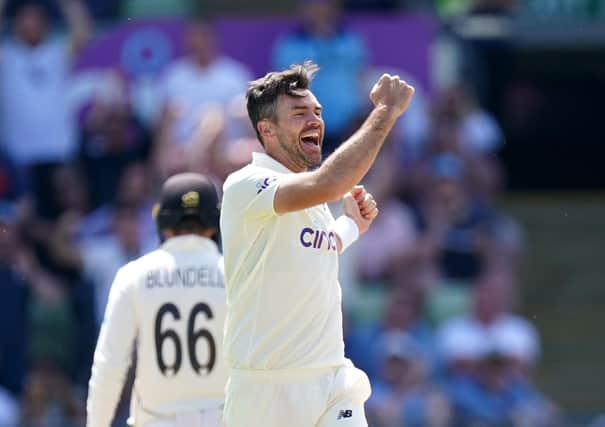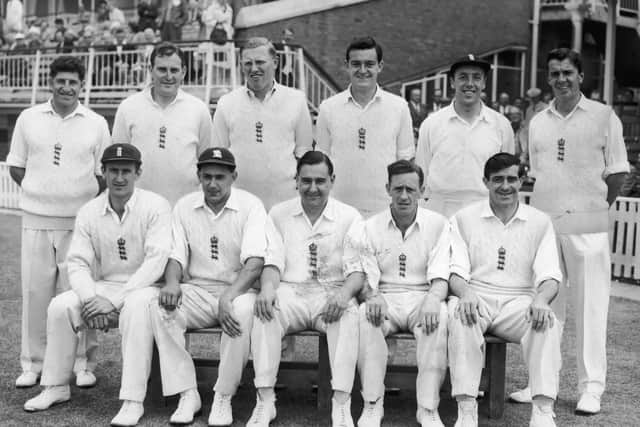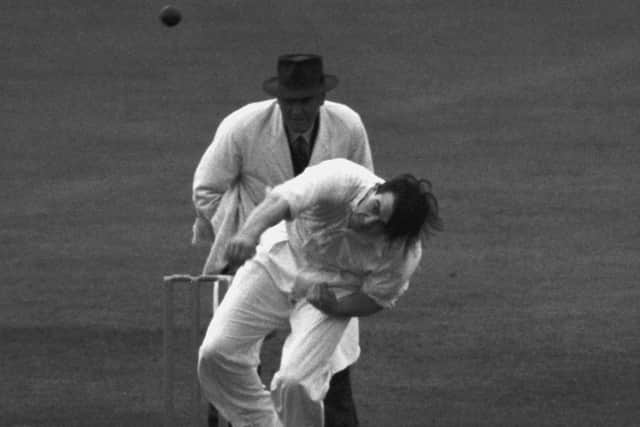How the immense workload of Fred Trueman and Brian Statham leaves James Anderson in the shade


MUCH has rightly been made of James Anderson’s durability and dedication after he became the most capped player in England’s Test history.
The Lancastrian, who turns 39 next month, beat Sir Alastair Cook’s record when he made his 162nd appearance against New Zealand in the second Test at Edgbaston.
Advertisement
Hide AdAdvertisement
Hide AdFor a pace bowler to endure for that long, let alone a batsman, is a great achievement, as is Anderson’s record of 617 Test wickets at 26.67, the most by an Englishman and the fourth-highest aggregate of all-time - soon to be the third-highest when he passes Anil Kumble’s 619, with only Shane Warne (708) and Muttiah Muralitharan (800) having captured more.


Many consider Anderson to be England’s greatest bowler, and he is not done yet given his fine form and fitness.
Amid the eulogies and appreciations that attended his milestone, many of which naturally focused on Anderson’s longevity, one might have supposed that no pace bowler in the game’s history had got through more work.
But, purely as a point of fact and hopefully one of interest, it used to be by no means unusual for bowlers of speed to send down not just as many balls as Anderson, but actually far more, the names of Fred Trueman and Brian Statham among those which instantly come to mind.
Advertisement
Hide AdAdvertisement
Hide AdCompared to Anderson’s workload, substantial though it has been, that of Trueman and Statham, the great English pace pair of the 1950s and 1960s, was positively immense.


Whereas Anderson has bowled 65,724 balls in all cricket, Trueman sent down 100,687 and Statham 101,946; ergo, their workload was roughly 35 per cent more.
Trueman four times bowled more than 1,000 overs in a first-class season and more than 500 overs in 12 other seasons.
In contrast, Anderson has only once bowled more than 500 overs in a first-class season (2005), a difference which the rise in one-day cricket in no way bridges.
Advertisement
Hide AdAdvertisement
Hide AdAnderson, of course, has done most of his hard toil in international cricket (44,797 of his career total of 65,724 balls) in an era when players are protected by central contracts which provide frequent rest periods and with little obligation to play county cricket.
In contrast, Trueman bowled only 15,178 of his 100,687 deliveries in international competition and Statham 16,056 of his 101,946, and they were often back on county duty the morning after a Test match had finished.
Hence Anderson’s relative freshness as he approaches his 40s, and the way that Trueman was a spent force in international terms by his mid-30s, precisely because he was hardly off the field.
Which brings me to an imponderable. How many balls has Anderson sent down in practice and the endless training sessions that go on now? Those balls are not recorded in Wisden or on any stats website when once they would have been etched on the first-class ledger.
Advertisement
Hide AdAdvertisement
Hide AdIndeed, when people say that Trueman warmed up for a match by lighting his pipe and twirling his arms a few times, they are not entirely exaggerating, for there was not nearly the same amount of training and practice in those days.
Different eras, of course, and different ways of doing things.
What is indisputable is that Anderson, Trueman, Statham et al were very great bowlers who bent their backs to the demands of the time.